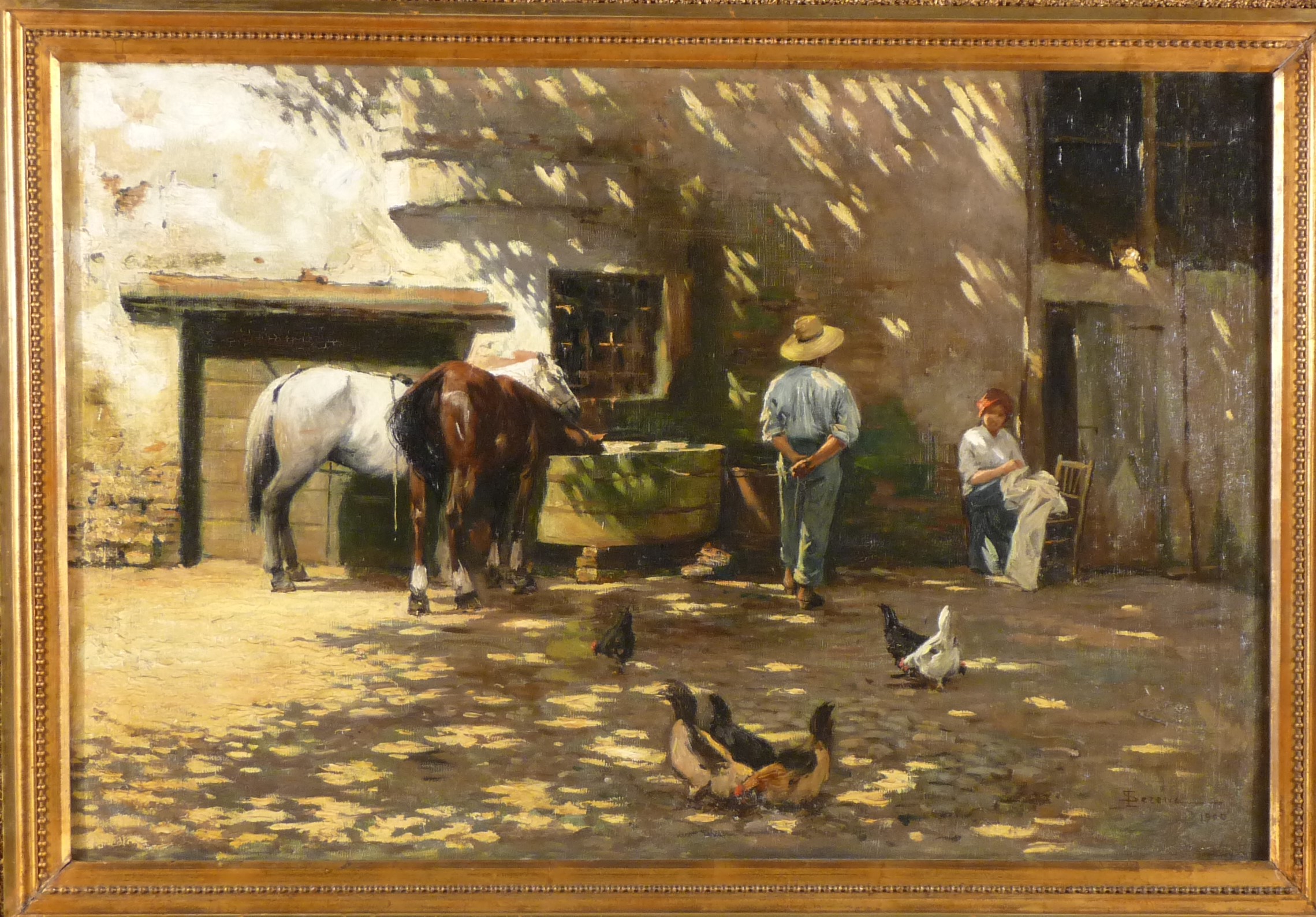Luigi Serena
PAINTERS
Horses at the watering hole
Position in the museum
GROUND FLOOR Room 1
Luigi Serena painted Horses at the Watering Hole in 1900.
The artist imagines a quiet summer afternoon on a farm. The scene takes place in the shade of a large pergola or a tree: men and animals rest together in the farmyard. The horses drink water after working in the fields, a farmer chats with a woman who is sewing and the chickens roam freely in search of food.
This work is one of Serena's most important works. In it, you can see the models that influenced the artist: the French painters called "Impressionists", who loved to paint outdoors, capturing the light and the atmosphere through spots of color; the Macchiaioli, a group of Tuscan artists who painted the countryside and the simple life of the farmers; the painter Guglielmo Ciardi, who teaches at the Academy of Fine Arts in Venice and often stops to paint the Treviso countryside.
These are researches that have in common a new way of representing the landscape and of using light and colors. In fact, in Horses at the Watering Hole, light is the true protagonist: it illuminates the scene with intensity, creating a contrast between the bright areas and those in shadow. This play of light and shadow gives vivacity to the scene, making us almost feel the heat of the sun and the freshness of the shadow.
MULTIMEDIA
TECHNICAL SHEET

From Bailo Museum